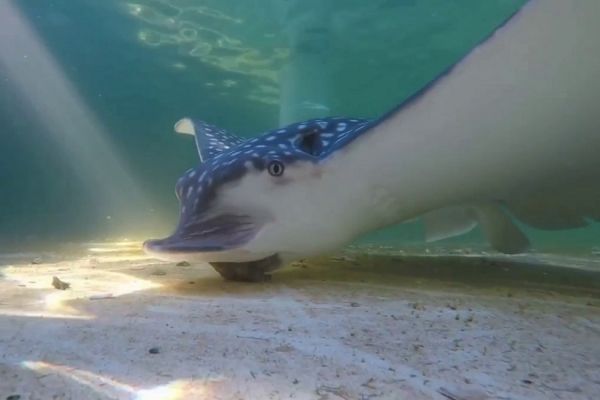“Shell-crushing” – exactly what it sounds like – is a predatory mode used by numerous marine life from crabs to octopuses to large fishes and mammals when they eat hard-shelled mollusks like clams, oysters and conchs. These predators have to break apart the shell using robust claws or fortified jaws to access the prey’s soft tissues. Despite its prevalence in the marine environment, this feeding behavior has remained elusive to study remotely, particularly for larger marine animals that destroy shells almost completely, leaving behind little trace. Moreover, because they are highly mobile, scientists have difficulty in directly observing their foraging habits, which is why the ecology of shell-crushing (durophagy) remains poorly understood in larger marine predators and the ecosystems with which they interact. So, there is little understanding of where or when this happens.
Using the whitespotted eagle ray (Aetobatus narinari) as a model, a team of scientists led by Florida Atlantic University’s Harbor Branch Oceanographic Institute in collaboration with FAU’s College of Engineering and Computer Science; Mote Marine Laboratory & Aquarium; and the Florida Institute of Technology, are the first to use passive acoustics to characterize how they consume hard-shelled mollusk prey in a controlled environment.
Scientists both quantified and classified shell-crushing by monitoring underwater sounds using acoustic recorders. Results, published in the Journal of Experimental Marine Biology and Ecology , reveal that using this technology, prey types could be distinguished based on acoustic features. Researchers were able to determine what a predator is eating based on how it sounds. In addition, shell-crushing simulation tests in the natural environment suggest the process is audible above ambient noise in coastal lagoons out to 100 meters.
Read more at Florida Atlantic University
Image: The whitespotted eagle ray (Aetobatus narinari) break apart hard shells like clams, oysters and conch using their fortified jaws to access the prey’s soft tissues. CREDIT: Florida Atlantic University's Harbor Branch Oceanographic Institute


